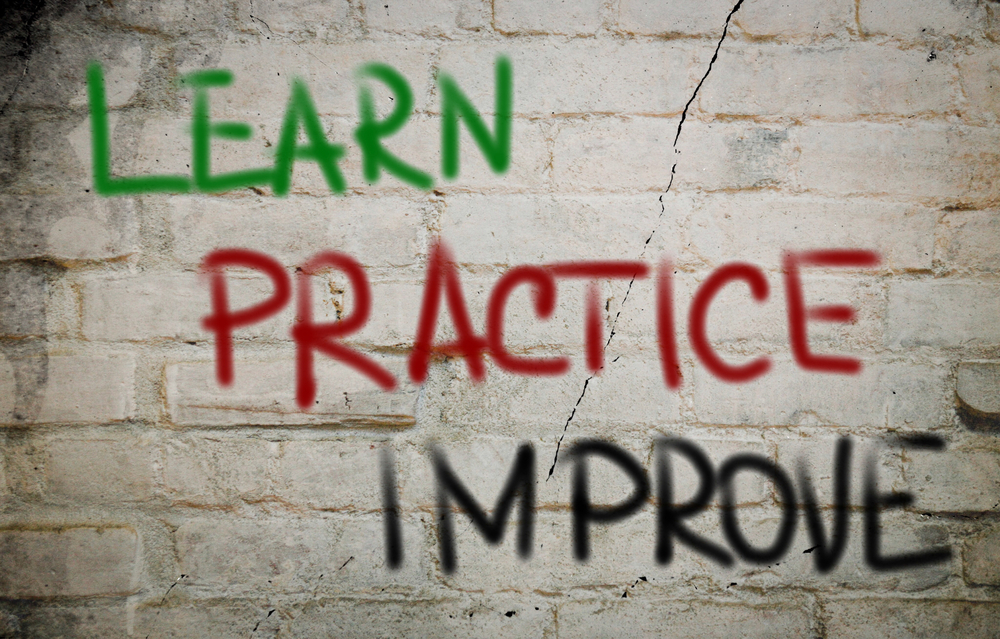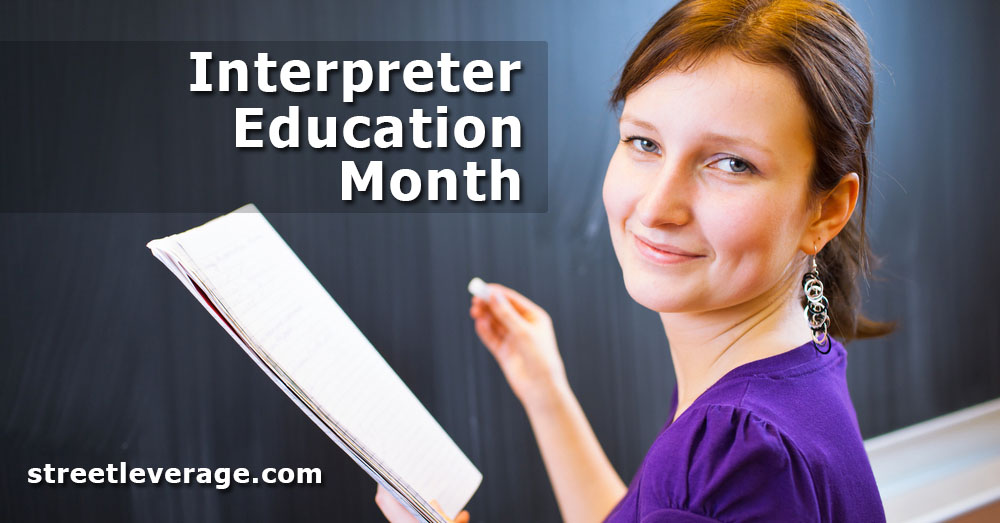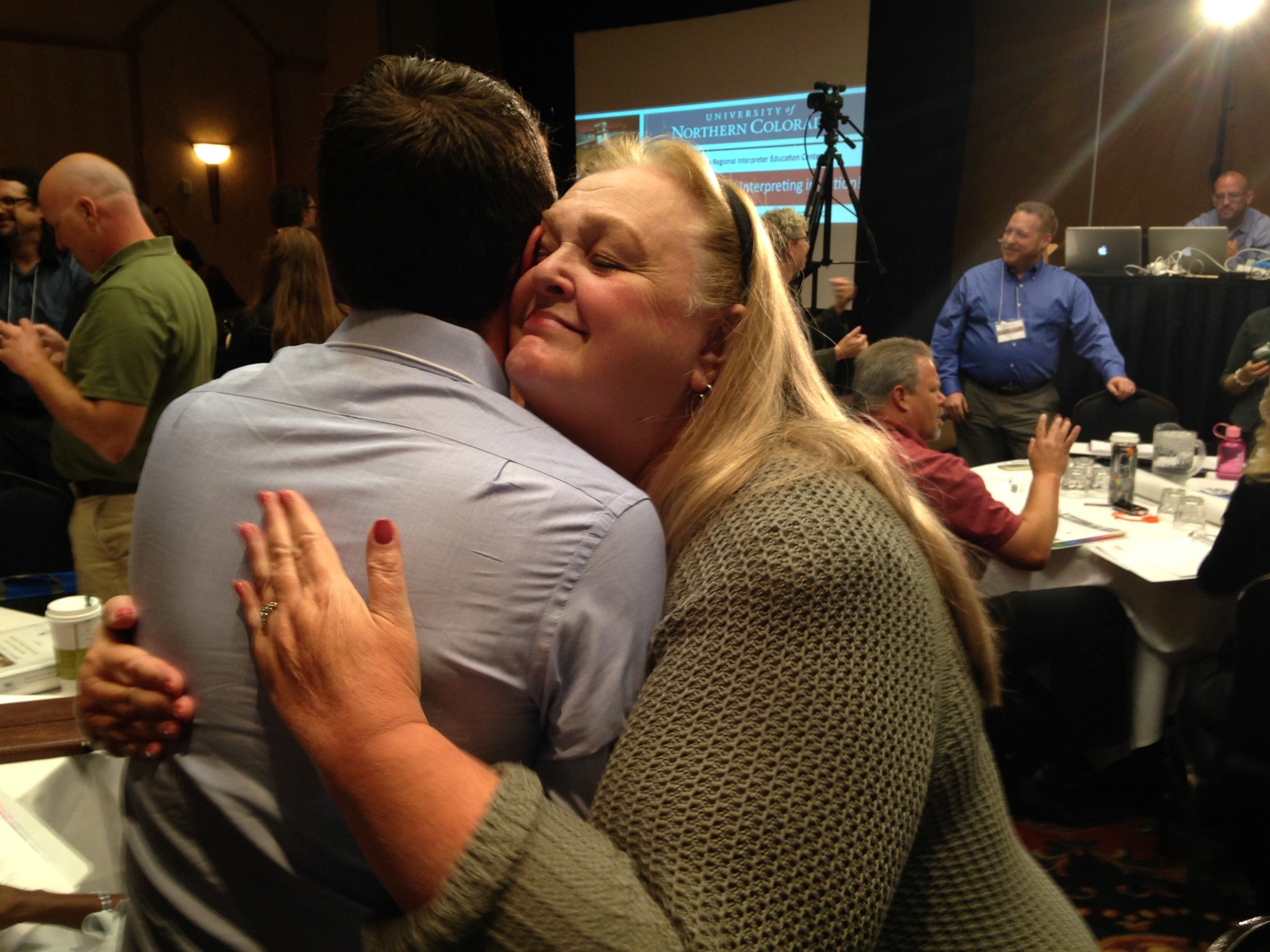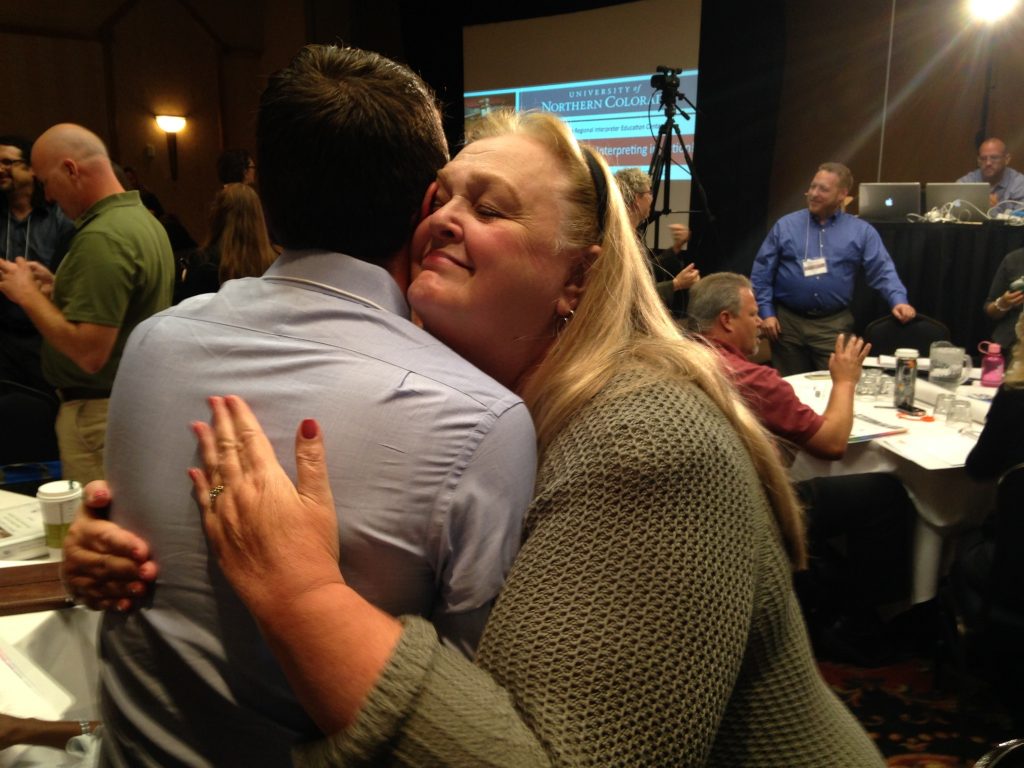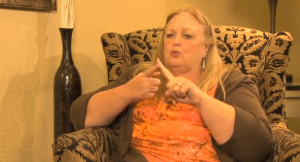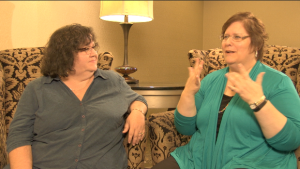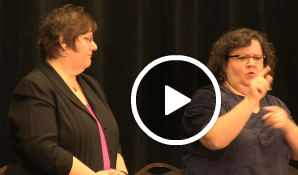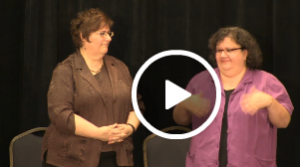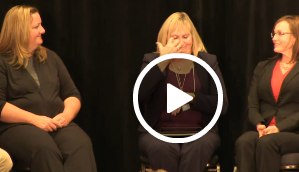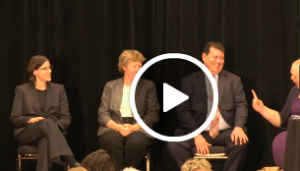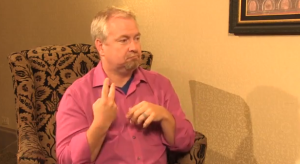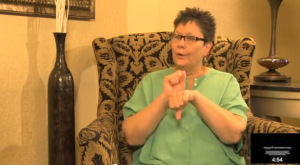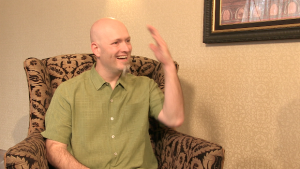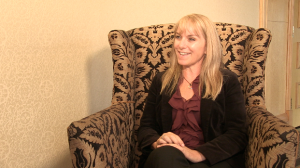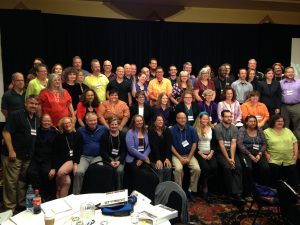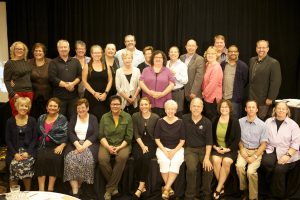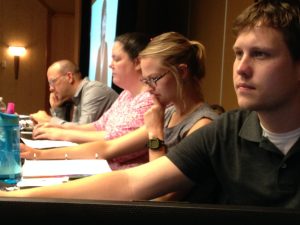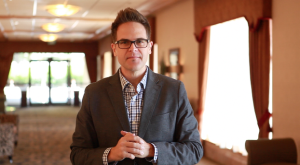
When ASL is seen publicly, it is often vis-à-vis hearing sign language interpreters. Aaron Brace examines the impact this has on public perceptions of ASL, and suggests strategies that create opportunities for Deaf interpreters to authentically represent their language and culture.
I’ve been asked a few times by family and friends to explain what was going on when a CDI/hearing team delivered the interpretation of NY City Mayor de Blasio’s press conference on Ebola. The very notion that Deaf people can work as professional sign language interpreters is new for most hearing people; indeed, if they see ASL at all, it’s usually hearing interpreters like me, or signed music videos of questionable value (also by hearing people) on social media.
One of the reasons I sometimes have a hard time explaining this service model is that feeling of an existential threat, which doesn’t necessarily disappear just because I know it to be false. But another reason, which I’d like to focus on here, is that I haven’t fully come to grips with the implications of hearing sign language interpreters like me being the public face of ASL. Rather than learning how to do it better, I’m learning how to let it go.
Navigating the Changing Dynamics in Interpreting
I first began thinking about hearing sign language interpreters as the public face of ASL a number of years ago. Like many who are reading this, I’ve been one of the go-to interpreters for public-facing work for most of my career. Although my focus has always been on serving the people relying on my work, I’ve found myself enjoying the opportunities to stand out, to be trusted in jobs where my work would be broadly seen. I’ve enjoyed the positive feedback afterward, the status it has given me among my colleagues, and the chance to share what I’ve learned about ASL and the Deaf community. For a large part of my career, that was simply the water I swam in. I didn’t consider that there was anything else. After a while, as painful as it is to admit this, I began to think it was my right.
I have also regularly worked at conferences for national and international organizations. I have typically been on stage at their conferences, handling keynote presentations as well as presentations by other prominent speakers. There came a time, though, when several of these organizations, with Deaf people in decision-making roles, decided that Deaf interpreters were to be on stage at all plenary sessions. I was relegated to small breakout sessions and working into English through a closed loop; I wasn’t on stage any more. It took me longer than I like to admit to get over losing the opportunity to do the plenary work, but I had the presence of mind to observe the work being done by the Deaf interpreters. Sure, the quality varied, but so much of the work that I saw was exemplary, and qualitatively superior to what I, or other hearing colleagues, typically produce.
More importantly, that model of service was chosen for high-profile work due to the involvement and leadership of knowledgeable Deaf people. Not only did they consider what would best serve the participants, but, surely, they were also influenced by the desire to authentically represent Deaf people’s language and culture to a broader audience.
Positioning My Ability
Like others, I began calling my work ‘bilingual/bicultural mediation’ soon after that terminology entered our professional discourse. Of course, that’s how the researchers in our field began describing what effective interpreting should be. It never crossed my mind that I was lacking the ASL fluency and cultural competency needed to actually do that kind of work. A Deaf friend recently told me that applicants to Gallaudet’s MA Program in Teaching ASL have to pass the ASL Proficiency Interview at a level 4 or higher…before beginning their studies. It took him three tries. Not only would I have failed to meet that bar before I began training, I’m quite confident I couldn’t meet it now.
I’m not qualified to go on about theories of bilingualism. I mention it only because it has become clear to me that the general public is primed to impute to me, to all hearing interpreters, a level of linguistic and cultural mastery that I simply don’t possess. Even if I’m relatively aware of the limits of what I have to offer, I don’t quite know how to articulate them to hearing people in a way that won’t undermine both their confidence in me as well as my own. Silence speaks volumes, as I already have the glamour of the words ‘professional’ and ‘interpreter’, and letters after my name. Oh, and I’m hearing. That’s probably the biggest factor in eliciting other hearing people’s high opinion of work they don’t understand.
This became painfully clear to me once, when I told one of my sisters that I’d be interpreting a play with a team that included a Deaf person as our Sign Master. She looked puzzled and said, “After all this time, Aaron, isn’t that what people ought to be calling you?” It was embarrassing to realize that I had never positioned my profession, myself, or, my ability to her in a way that she could have thought any differently. To her, I was the exemplar of ASL fluency. Who knows? Maybe I need to believe my own hype in order to have the nerve to do this kind of work at all.
Shifting The Focus
I realized recently that the more effort I put into preparing to interpret something like a play, the more I begin to worry. I worry not only that the hearing audience may think they’re seeing me produce a work of ASL literature, but that I might even start to believe it myself- all without anyone saying out loud that’s what we’re thinking. I worry that the Deaf poets, actors, storytellers, translators, teachers, and the friends I try to emulate in these instances will have far fewer chances than I, if any, to stand before a similar audience, with the same authority that’s imputed to me – but which I have only borrowed from them.
When I stand up at a public or televised event before a predominantly hearing crowd, on a real or virtual stage, under a real or virtual spotlight, I worry that some ASL student will decide to become a sign language interpreter in an effort to seek out the same kind of attention that I’ve realized I can be overly fond of.
But when a qualified, certified Deaf interpreter, like the one working at the Ebola press conference, gets asked questions about what interpreting is and how it serves the Deaf community, I don’t worry so much. Not only because his answers are likely to contain observations I couldn’t legitimately make, but also because it begins to shatter hearing people’s frequently-held stereotype of Deaf people as needy receivers of information. Deaf children also benefit from seeing qualified Deaf professionals modeling one way to represent their language and culture. If we quibble that not all CDIs are as experienced, or as able to give a good account of our profession, well…that’s never stopped the rest of us, has it?
Stepping out of the Spotlight
In her article, Are Hearing Interpreters Responsible to Pave the Way for Deaf Interpreters?, Anna Mindess listed some excellent, practical steps for us to take in expanding opportunities and visibility for CDIs. In addition to hers, I’d like to add a few more. Some of these I’ve already implemented for myself, others are aspirational. Some may be more practical in some geographic areas than others:
- work with Deaf colleagues and the local Deaf community to determine what an increased public presence of Deaf signers, including but not limited to CDIs, might look like and how to work towards making that presence a reality;
- enlist as allies any hearing hiring agents who understand the value of CDIs;
- consider working, on occasion, for reduced rates or pro bono in order to get more hiring entities to try using Deaf/hearing interpreting teams. This may be a controversial idea, but I believe that, used judiciously, it can be an effective tactic in getting more native ASL out where hearing people will see it;
- share exceptional Deaf- or Coda-made videos on social media, along with a description to hearing friends of what makes them exceptional.
- And finally, develop the reflex to step aside and team with a qualified Deaf colleague at every opportunity that comports with your own community’s values. Deaf people, even CDIs, may disagree strongly about when it’s necessary or even just preferred to have a Deaf face as the public face of ASL. It’s a process. I choose not to hinder that process, but to foster it.




